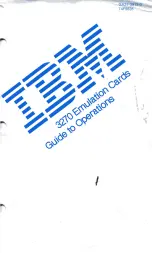
Architecture Overview
3-2
3.1
Architecture Overview
The digital signal processor (DSP) subsystem is built around a core processor
and peripherals that interface with:
-
The TI925T via the microprocessor unit interface (MPUI)
-
Various standard memories via the external memory interface (EMIF)
-
Various system peripherals via the TI peripheral bus (TIPB) bridge
Figure 3–1 shows the OMAP5910 device with the DSP subsystem high-
lighted. Figure 3–2 shows the subsystem and the modules with which it inter-
faces.
Figure 3–1. Highlight of DSP Subsystem
MPU Core
(TI925T)
(Instruction
Cache, Data
Cache, MMU)
System
DMA
Controller
TMS320C55x DSP
(Instruction Cache, SARAM,
DARAM, DMA,
H/W Accelerators)
MPU
Peripheral
Bridge
LCD
I/F
MPU
Interface
SRAM
SDRAM
Memories
Flash and
SRAM
Memories
DSP
MMU
16
16
32
16
32
32
32
32
32
32
16
MPU Private Peripheral Bus
DSP Public (Shared) Peripheral Bus
32
MPU Public
16
DSP
DSP Public Peripherals
McBSP1
McBSP3
MPU Public Peripherals
USB Host I/F
JTAG/
Emulation
I/F
OSC
12 MHz
Clock
OSC
OMAP5910
ETM9
Timers (3)
MPU/DSP Shared Peripherals
Mailbox
MPU Private Peripherals
Timers (3)
16
Memory Interface
Reset External Clock
MPU Bus
32 kHz
1.5M Bits
Traffic Controller (TC)
Watchdog Timer
Level 1/2 Interrupt Handlers
Configuration Registers
Clock and Reset Management
Watchdog Timer
Level 1/2
Private Peripherals
GPIO I/F
USB Function I/F
Camera I/F
MPUIO
32-kHz Timer
PWT
PWL
M
I
F
S
M
I
F
F
I
M
I
F
MCSI1
MCSI2
Keyboard I/F
Requests
E
E
TIPB
Switch
UART1
UART2
UART3 IrDA
32
MMC/SD
LPG x2
HDQ / 1-WIRE
DSP Private
Peripheral Bus
Perripheral Bus
McBSP2
Device Identification
RTC
Interrupt Handlers
I
2
C
µ
Wire
Frame Adjustment
Counter
32
32
32
32
















































